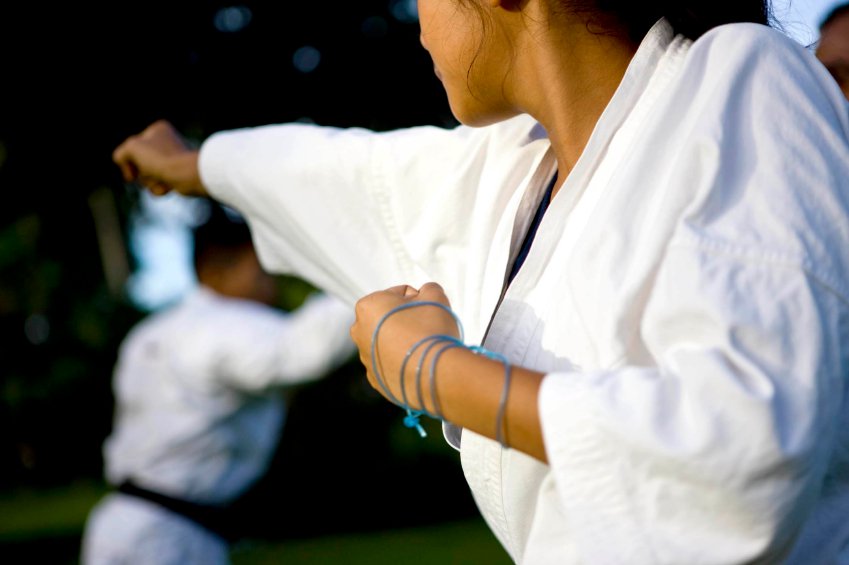
Whether your New Year’s resolution is to lose weight, relieve stress or learn a new skill, martial arts lessons may be the answer for you. Most classes provide a full-spectrum wellness experience. The only trouble is, for most parts of the Western world, you have so many options it’s hard to know where to take lessons. Narrow it down to the area’s best by keeping a few things in mind.
Choosing a Style
Although many people think this is the first thing you should consider, it’s better to leave this alone unless you’re already passionately interested in a specific kind of martial art. The overwhelming majority of styles teach the same concepts, just with different techniques and drills to express them. There is no such thing as a “superior” style, just superior instructors. By limiting which kind of martial art you’re willing to study, you might eliminate the best program in your area before beginning your search.
Three Kinds of School
Martial arts programs come in all shapes and sizes, but typically fall into three broad categories.
Individual classes, such as those offered through a community college, at a church, or in a parks and recreation department. These are typically run by a single instructor with a full-time job who teaches for the love of teaching. Individual classes tend to be cheaper than other options, but have a more restricted schedule.
Mom and pop dojos are in a single storefront, typically have just one space for classes, and focus on a single style. This is what most people picture when they imagine taking classes. They usually have a schedule of classes in the evenings, and some limited weekend classes. They’re more expensive than individual classes.
Superschools have hundreds of students, multiple training rooms, and frequently host a large staff of instructors and administrative help. Schedules tend to be wide and accessible, and the facilities often boast other features like a pro shop or even a coffee bar. These are usually the most expensive option, but some will have inexpensive options for people willing to accept a limited schedule. A few even host individual class-style options from outside teachers.
As with the style of martial art, no category is better or worse than the others. It’s more a matter of which kind of program fits your schedule, and which kind of training community works best with how you like to learn.
The Intro Program
The overwhelming majority of schools offer some kind of introductory offer. It’s often structured as a small number of lessons at a low price, free lessons with purchase of a training uniform, or a free uniform with purchase of some lessons. Regardless of how it’s structured, you should take the intro offer at two or three schools in your area to determine which you like best. While in the intro program, pay close attention to a few specifics:
Safety — learn the school’s culture about safety. Is there a visible first aid kit? Are instructors certified in first aid? Do they wear the proper equipment, or “wing it?” Proper equipment may include head gear, sparring gloves, groin guards and mouth gear. Additional safety gear can be found with a quick Internet search.
Cleanliness — a dojo that smells of sweat with a nasty restroom doesn’t mean the instructor is incompetent, but it does mean they don’t pay attention to the details.
Other Students — take time to chat with other students, and parents of child students. See if they rave about the program, or have complaints. Listen to the complaints and decide if they’re important to you.
Follow-Through — ask for information about something staff can’t get you right away, such as pricing on a training video. Find out how long it takes for them to get back to you with the information.
If a school doesn’t offer an introductory program, be wary. If they insist you sign a long-term contract without an intro, run away.
Final Decision
After you’ve tried the intros at a few schools, simply go with the program where you feel the most at home. To the extent you can afford it, try not to let tuition make the final decision here. If you stick with your lessons, you’re in for a life-long relationship with the teachers at that school. It’s well worth the difference in price.


Leave a Reply